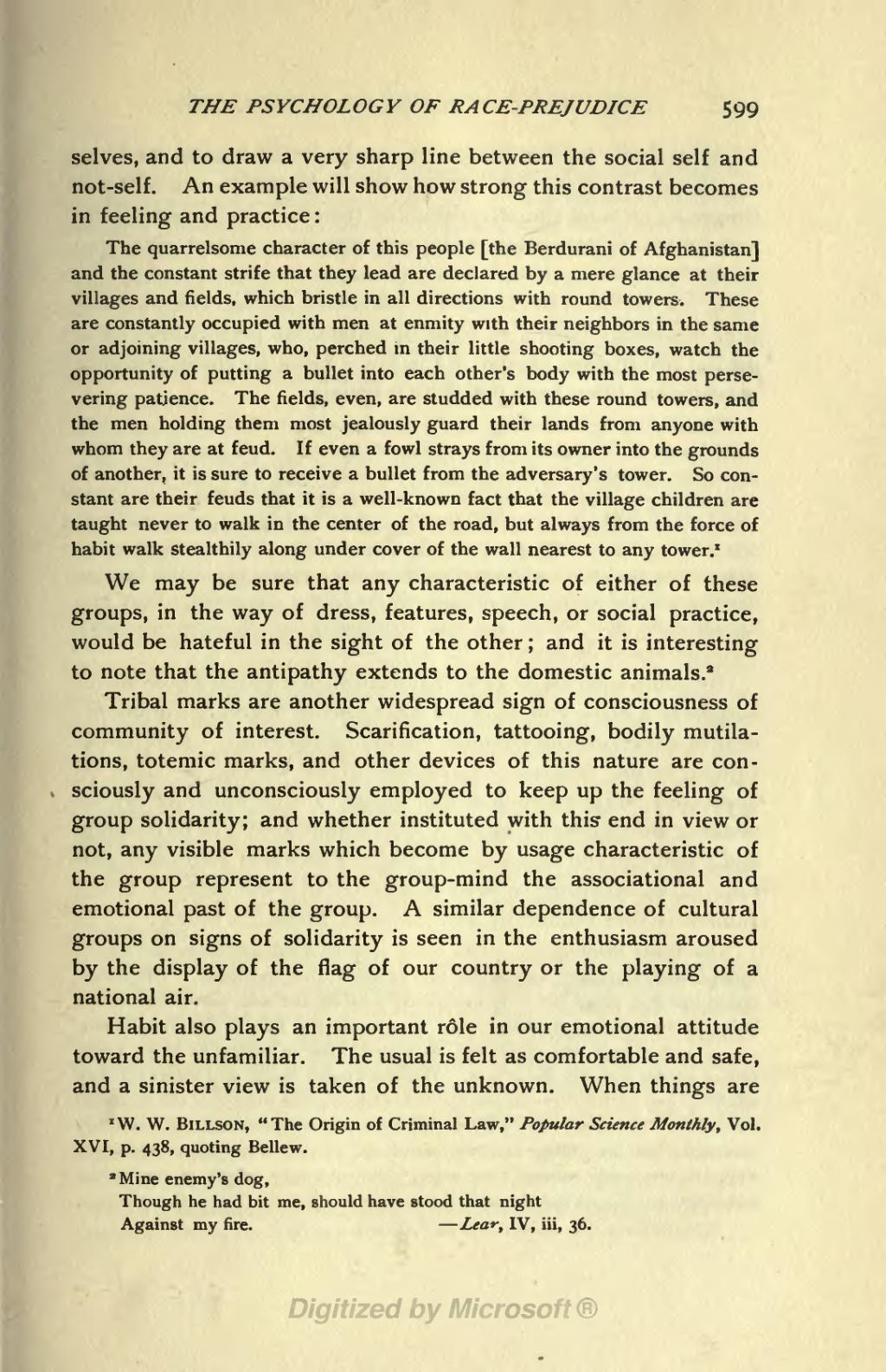THE PSYCHOLOGY OF RACE-PREJUDICE 599
selves, and to draw a very sharp line between the social self and not-self. An example will show how strong this contrast becomes in feeling and practice :
The quarrelsome character of this people [the Berdurani of Afghanistan] and the constant strife that they lead are declared by a mere glance at their villages and fields, which bristle in all directions with round towers. These are constantly occupied with men at enmity with their neighbors in the same or adjoining villages, who, perched in their little shooting boxes, watch the opportunity of putting a bullet into each other's body with the most perse- vering patience. The fields, even, are studded with these round towers, and the men holding them most jealously guard their lands from anyone with whom they are at feud. If even a fowl strays from its owner into the grounds of another, it is sure to receive a bullet from the adversary's tower. So con- stant are their feuds that it is a well-known fact that the village children are taught never to walk in the center of the road, but always from the force of habit walk stealthily along under cover of the wall nearest to any tower. 1
We may be sure that any characteristic of either of these groups, in the way of dress, features, speech, or social practice, would be hateful in the sight of the other ; and it is interesting to note that the antipathy extends to the domestic animals. 2
Tribal marks are another widespread sign of consciousness of community of interest. Scarification, tattooing, bodily mutila- tions, totemic marks, and other devices of this nature are con- sciously and unconsciously employed to keep up the feeling of group solidarity; and whether instituted with this 1 end in view or not, any visible marks which become by usage characteristic of the group represent to the group-mind the associational and emotional past of the group. A similar dependence of cultural groups on signs of solidarity is seen in the enthusiasm aroused by the display of the flag of our country or the playing of a national air.
Habit also plays an important role in our emotional attitude toward the unfamiliar. The usual is felt as comfortable and safe, and a sinister view is taken of the unknown. When things are
X W. W. BlLLSON, "The Origin of Criminal Law," Popular Science Monthly, Vol. XVI, p. 438, quoting Bellew.
2 Mine enemy's dog,
Though he had bit me, should have stood that night Against my fire. Leaf, IV, iii, 36.
